Share
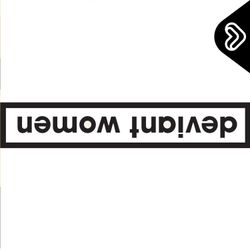
Deviant Women
Each fortnight, hosts Lauren and Alicia delve into a ‘deviant’ woman from history, fiction, mythology and the contemporary world: those who aren’t afraid to break the rules, to subvert the system, to explore, to seek and to challenge the status quo.
Latest episode

Lipp Selects: My Girlfriend Dolly
50:46|New to Lipp Media, hosts Heidi & Jessa relive the most cringey moments of their adolescence as they guide listeners through Dolly and Girlfriend Magazines from the late 90s and early 00s. In this episode of My Girlfriend Dolly, Jessa & Heidi read to you from Dolly magazine from July 2002. They discuss joining Lipp Media (OMG!!), 00's it girl Kate Bosworth & Miki cosmetics, read articles I'm Not Afraid To Be A Freak & take the quiz Are You A Grot?Listen to My Girlfriend Dolly wherever you listen to us!
More episodes
View all episodes
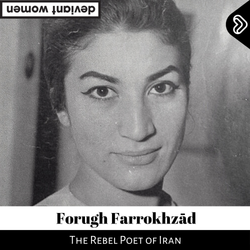
19. Forough Farrokhzad
01:18:00||Season 4, Ep. 19For over 1000 years, poetry has remained one of the most important traditions of Persian culture. So when, in the mid-twentieth century, a young woman emerged with a voice that spoke with a whirlwind of desire, a voice yearning with love, intimacy, and insight well beyond her years, the establishment was shaken. With a tumultuous love life that saw her become one of Iran's most controversial and scandalous public figures, Farrokhzād suffered under the glaring public eye. But she was also a mother, a filmmaker, and a visionary. Despite her poetry being banned for more than a decade after the Iranian Islamic Revolution, today she is seen as one of Iran's most revered poets, a woman with the audacity to speak taboos in a revolutionary form.Join us for the last episode of Season Four as we explore one of the most extraordinary poets of the twentieth century. Selected ReferencesDehghan, Saeed Kamali. “Former lover of the poet known as Iran's Sylvia Plath breaks his silence.” The Guardian, Mon 13 Feb, 2017. https://www.theguardian.com/books/2017/feb/12/forough-farrokhzad-iranian-poet-ebrahim-golestan-slyvia-plathForugh Farrokhzad: The Rebel Poet of Iran, http://farrokhzadpoems.com/Forugh Farrokhzad. 2018. https://www.forughfarrokhzad.org/index1.htmGhasemi, Parvin, and Farideh Pourgiv. "Captivity, Confrontation, and Self‐Empowerment: identity in Forugh Farrokhzad’s poetry." Women's History Review 19.5 (2010): 759-774.Hillmann, Michael C., A. Lonely Woman. "Forugh Farrokhzad and Her Poetry." Washington DC: Mage Publishers (1987).Milani, Farzaneh. "Love and sexuality in the poetry of Forugh Farrokhzad: A reconsideration." Iranian Studies 15.1-4 (1982): 117-128.Radjy, Amir-Hussein. “Overlooked No More: Forough Farrokhzad, Iranian Poet Who Broke Barriers of Sex and Society.” New York Times, Jan 30, 2019. https://www.nytimes.com/2019/01/30/obituaries/forough-farrokhzad-overlooked.htmlZubizarreta, John. "The woman who sings no, no, no: Love, freedom, and rebellion in the poetry of Forugh Farrokhzad." World Literature Today 66.3 (1992): 421-426.If you want to support Deviant Women, follow us on: PatreonTwitter @DeviantWomenFacebook @deviantwomenpodcastInstagram @deviantwomenpodcastDeviant Women is recorded and produced on the lands of the Kaurna People and we pay respect to Elders past, present and emerging.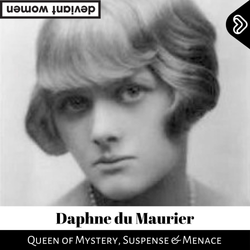
18. Daphne du Maurier
01:17:34||Season 4, Ep. 18As Halloween approaches and we near the end of the spooky season, it's time to delve back into the world of the dark and sinister. And who better to take us there than the queen of mystery, suspense and menace, author Daphne du Maurier.Du Maurier spent her formative years exploring the windswept coast of Cornwall where her imagination was fired by shipwrecks and derelict mansions, with the ever present backdrop of the ocean churning nearby. Du Maurier would go on to spend most of her life along the rugged Cornish coastline, and it was also here that she set her most enduring work, Rebecca. Published over eighty years ago, Rebecca has never been out of print, and its thrilling and gothic tone still haunts readers today. But Rebecca was only one of a string of successful works for du Maurier, whose short stories and novels have been endlessly dramatised for the big and small screens, continuing to inspire adaptations to this day. But du Maurier herself was also a woman of secrets, and her personal life bled into her fiction, informing the dark and brooding worlds she so often created. So keep a lamp burning in the dark night as we open the pages on the life and work of Daphne du Maurier.De Rosney, Tatiana. Manderley Forever: A Biography of Daphne Du Maurier. St Martin's Publishing Group, 2017.Forster, Margaret. Daphne Du Maurier. Random House, 2012.Horner, Avril & Zlosnik, Sue. Daphne du Maurier: Writing, Identity and the Gothic Imagination. Palgrave Macmillan, 1998.Pryor, Cathy. 'Venetian tendencies; Daphne du Maurier, born 100 years ago today, kept a dark secret behind the facade of the respectable English wife'. The Independent of Sunday, 13 May 2007.White, Sophie. 'The menacing Daphne du Maurier'. The Independent, 2 October 2017.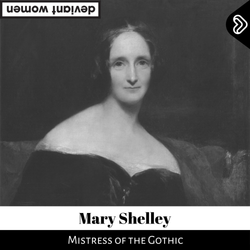
17. Mary Shelley
01:28:51||Season 4, Ep. 17On the darkest of dark and stormy nights, the teenage Mary Shelley awoke from a nightmare. In her vision she saw a young man, a 'pale student of unhallowed arts', kneeling over his creation. The image inspired one of the most enduring horror works of our time, Frankenstein. But Mary Shelley was not just a mistress of the gothic. Born to one of the most influential proto-feminists of our age, Mary Wollstoncraft, and political radical and anarchist William Godwin, Mary moved in intellectual and artistic circles that would often overshadow her own greatness. But great she was. A woman who suffered and overcame tremendous loss, she was a survivor who spoke to some of the greatest anxieties of her - and our - time. But she was also a travel writer, an editor, a biographer, and feminist activist.Join us as we steal away in the night to traverse the stormy crossing from England to France and curl up by a fire to hear the tale of the original teen goth, Mary Shelley.Selected ReferencesCrook, Nora. "Mary Shelley, Author of Frankenstein." A New Companion to the Gothic, edited by David Punter. Chichester, UK: John Wiley & Sons, 2012. 110-22.Gilbert, Sandra M. “Horror's Twin: Mary Shelley's Monstrous Eve.” The Madwoman in the Attic. 2nd ed., Yale University Press, 2000. 213-247.Lovejoy, Bess. Mary Shelley’s Obsession with the Cemetery. JSTOR Daily October 3, 2018. https://daily.jstor.org/mary-shelleys-obsession-with-the-cemetery/Lepore, Jill. The Strange and Twisted Life of Frankenstein. The New Yorker. Feb 12 & 19 2018. https://www.newyorker.com/magazine/2018/02/12/the-strange-and-twisted-life-of-frankensteinSampson, Fiona. Frankenstein at 200 – why hasn't Mary Shelley been given the respect she deserves? The Guardian. Jan 13, 2018. https://www.theguardian.com/books/2018/jan/13/frankenstein-at-200-why-hasnt-mary-shelley-been-given-the-respect-she-deserves-If you want to support Deviant Women, follow us on: PatreonTwitter @DeviantWomenFacebook @deviantwomenpodcastInstagram @deviantwomenpodcastDeviant Women is recorded and produced on the lands of the Kaurna People and we pay respect to Elders past, present and emerging.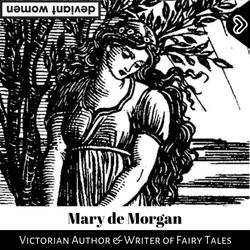
16. Mary de Morgan
01:14:05||Season 4, Ep. 16When it comes to fairy tale tellers, most of us think of the Brothers Grimm, Hans Christian Andersen, or even Charles Perrault. But the names we less frequently associate with the genre are those of women: the writers and weavers of stories that are so often overshadowed by many of their male contemporaries. During the tail end of the 19th century, one such woman was adding her voice to the world of the Fae, crafting stories of talking animals, witches and wizards, pixies, peasants, princes and princesses - all the ingredients we've come to associate with the art of the fairy tale. But Mary de Morgan wasn't afraid to play with these tropes, and the many and varied influences that shaped her life also helped to shape her stories. From growing up participating in the seances and salons of her Spiritualist mother to moving in a circle of artists that included members of the Pre-Raphaelites and the Arts and Craft Movement, Mary was surrounded by inspiration to fuel her creativity, leading her to publish three volumes of fairy tales in her lifetime and to write many other works besides. But it's only recently that de Morgan's stories have come back to the fore, and that she has begun to receive the recognition she so deserves for her contribution to the mystical and magical world of faerie.Gather round as we cross into fairyland, and discover the life and works of Mary de Morgan.Carroll, Alicia. ‘The Greening of Mary De Morgan: The Cultivating Woman and the Ecological Imaginary in “The Seeds of Love”’. Victorian Review, vol. 36, no. 2, Fall 2010, pp.104-117.De Morgan, Mary. On a Pincushion and Other Fairy Tales. Seeley, Jackson & Halliday, 1877.The Necklace of Princess Fiorimonde and Other Stories. MacMillan & Co., 1880.Pemberton. Marilyn. Out of the Shadows: The Life and Works of Mary De Morgan. Cambridge Scholars Publishing, 2012.If you want to support Deviant Women, follow us on: PatreonTwitter @DeviantWomenFacebook @deviantwomenpodcastInstagram @deviantwomenpodcastDeviant Women is recorded and produced on the lands of the Kaurna People and we pay respect to Elders past, present and emerging.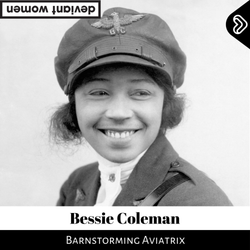
15. Bessie Coleman
01:10:09||Season 4, Ep. 15In the 1920s, the infancy of aviation, pilots took to the skies to shock and awe their audiences with death dives, barrel-roles, and wing-walking. Within these flying circuses, one performer truly stood out: the Bird Woman, Bessie Coleman. Born to a family of sharecroppers in Texas, Coleman knew that to live her dreams, she'd need to leave the US and its prejudiced segregationist policies and move to France. Here, a place where women were truly excelling at the new art of flying, she grew her own wings and became the first Black woman in history to earn her pilot's licence. At home, she quickly became a sensation, performing daring feats of high-flying acrobatics in her old war-time Jenny. But she was a performer as much on ground as she was in the air, and she wasn't afraid to self-aggrandise, particularly in the effort to increase Black participation in aviation. As flying became a symbol of her own political empowerment, Coleman soon dreamed of establishing a flying school of her own and opening the skies to those who'd been denied such freedoms.So put on your goggles, fire up an old biplane, and take to the skies with us as we explore the daring life of Bessie Coleman. Bix, Amy. "Bessie Coleman: Race and Gender Realities behind Aviation Dreams." Realizing the Dream of Flight, edited by Virginia P. Dawson and Mark D. Bowle, National Aeronautics and Space Administration, NASA History Division, 2005.Cochrane, Kira (3 Oct, 2009). Trailblazers: The early women aviators, The Guardian. https://www.theguardian.com/lifeandstyle/2009/oct/03/early-women-aviatorsCreasman, Kim. "Black Birds in the Sky: The Legacies of Bessie Coleman and Dr. Mae Jemison." The Journal of Negro History 82.1 (1997): 158-68. Web.Gils, Bieke. "Bessie Coleman: “The Only Race Aviatrix in the World”." Before Jackie Robinson: The Transcendent Role of Black Sporting Pioneers, University of Nebraska Press, 2017.Slotnik, Daniel E. (Dec. 11, 2019). Overlooked No More: Bessie Coleman, Pioneering African-American Aviatrix The New York Times https://www.nytimes.com/2019/12/11/obituaries/bessie-coleman-overlooked.htmlIf you want to support Deviant Women, follow us on: PatreonTwitter @DeviantWomenFacebook @deviantwomenpodcastInstagram @deviantwomenpodcastDeviant Women is recorded and produced on the lands of the Kaurna People and we pay respect to Elders past, present and emerging.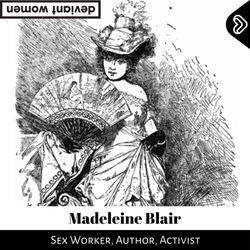
14. Madeleine Blair
01:19:18||Season 4, Ep. 14In 1919, an autobiography appeared that scandalised polite American society. Chronicling the life and times of a sex worker who went by the pseudonym Madeleine Blair, Madeleine: An Autobiography took to task the puritanical forces that condemned her work and her industry, and laid on the table the story of her life as a so called 'soiled dove'. In her frank and engaging accounts, she outlines the many ups and downs that lead her into the life of a 'painted lady', but adamantly refuses to let anyone view her as a victim. From her time in Montana and Chicago, to her work over the border in Canada, Blair traverses many a bawdy-house of ill-repute, always striving to champion the legitimacy of her profession and to shed light on the world of debauchery in which she moved.Come with us to the plush parlour rooms and smoking dens of the American north, as we delve into the life of this savvy business woman and entrepreneur, Madeleine Blair.Blair, Madeleine. Madeleine: An Autobiography. Harper & Brothers Publishers, 1919. https://digital.library.upenn.edu/women/madeleine/madeleine/madeleine.html#intro Butler, Anne. M. Daughters of Joy, Sisters of Misery: Prostitutes in the American West, 1865-90. University of Illinois Press, 1987. Erickson, Lesley. Westward Bound: Sex, Violence, the Law, and the Making of a Settler Society. UBC Press, 2011.MacKell Collins, Jan. Good Time Girls of the Rocky Mountains: A Red-Light History of Montana, Idaho, and Wyoming. TwoDot, 2020.McMaster, Lindsey. Working Girls in the West: Representations of Wage-Earning Women. UBC Press, 2007.Morgan, Lael. Wanton West: Madams, Money, Murder, and the Wild Women of Montana's Frontier. Chicago Review Press, 2011.If you want to support Deviant Women, follow us on: PatreonTwitter @DeviantWomenFacebook @deviantwomenpodcastInstagram @deviantwomenpodcastDeviant Women is recorded and produced on the lands of the Kaurna People and we pay respect to Elders past, present and emerging.